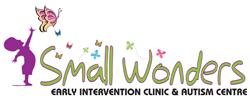Learning Disability
As the common man grows more and more aware about the essentiality of education, the enrollment of students into schools has also increased hand in hand. Poor scholastic performance has led many children to drop out of schools. In most cases, a common reading made is that these very students seem to perform well in other areas of development like self- help, communication, motor and social abilities etc. It's just in the academic performance area that these children seem to suffer. This brings into question the necessity of a detailed academic evaluation
The Dyslexia Screening Test - Junior
This test helps to identify children in the age range of six and a half to eleven and a half years with potential reading difficulties. Early identification makes it easier to overcome this problem. It also helps to identify children who are "at-risk" of reading concerns so that they are given extra support at school.
GLAD Assessment
Grade Level Assessment Device has been developed to find out the level of academic performance in children up to grade four. It helps to assess the level of functioning and process of learning, which will in turn show us the areas that the child deviates in, thus giving remedies a platform to begin with.
WRAT - 5 (World Range Achievement Test - 5th Edition)
WRAT - 5 is a nationally norm-referenced test that measures the basic academic skills of word reading, spelling, math computation and sentence comprehension. Generally used on children ranging from age five and very much into adulthood, i.e. almost eighty-five years, the WRAT-5 result can help educators estimate student's basic academic skill levels for general education purposes.
NIMHANS Index for Specific Learning Disability
The NIMHANS Index for Specific Learning Disabilities consists of tests of Reading Writing, Spelling and Arithmetic Abilities, to identify children with Specific Learning Disabilities in these areas of learning. It consists of two levels:
Level I:
Consisting of tests of Attention, Visual Discrimination, Visual Memory, Auditory Memory, Speech and Language, Vasomotor skills and Writing Skills.
Level II:
Consisting of tests of Attention, Language (Reading, Writing, Comprehension), Spelling, Perceptual Motor Abilities, Memory and Arithmetic.



